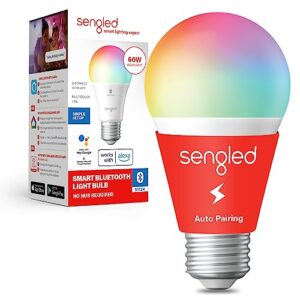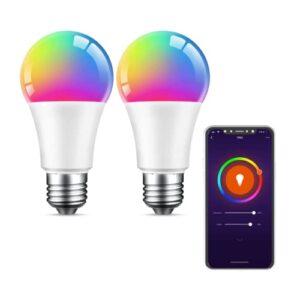Do Smart Lights Use Electricity When Off?
Key Takeaways
- Smart light bulbs consume a small amount of electricity when turned off to maintain their connection to controls and be ready to turn on when activated.
- The power draw of smart lights in the off state ranges from 0 to 0.3 watts, making them more energy-efficient compared to traditional incandescent bulbs.
- The small power draw of smart lights when turned off is unlikely to have a significant impact on electricity bills, and the overall energy savings provided by smart lights outweigh the minimal increase in energy costs.
Smart lights have become increasingly popular due to their convenience and energy-saving capabilities. However, a common question that arises is whether these smart bulbs consume electricity when they are turned off. Let’s delve into this topic and explore the facts and details surrounding the power usage of smart lights when they are not in use.
The Power Draw of Smart Lights in the “Off” State
Contrary to what some may assume, smart light bulbs do consume a small amount of electricity when they are turned off. This minimal power draw is necessary for the bulb to maintain its connection to controls and be ready to turn on when activated through a smartphone or voice assistant.
According to Livingetc, the power consumption of a smart light bulb in the off state is typically only a few cents per month per bulb. This low power usage is unlikely to have a significant impact on your electricity bill.
Understanding the Energy Efficiency of Smart Lights
While smart lights do use a small amount of electricity when turned off, it’s important to consider their overall energy efficiency. Smart lights are typically LED-based, which inherently makes them energy-efficient compared to traditional incandescent bulbs.
As mentioned in Upgraded Home, the power draw of smart lights in the off state ranges from 0 to 0.3 watts. This minimal power usage is significantly lower than the power consumption of incandescent bulbs, making smart lights a more environmentally friendly option.
Moreover, the energy savings of smart lights come from their extended lifespan and the ability to control them remotely. LED bulbs have a long lifetime, which reduces the frequency of replacement and lowers overall energy consumption. With smart controls, users can easily turn off the lights when they are not needed, set schedules, and adjust brightness levels, further optimizing energy usage.
Weighing the Impact on Energy Costs
Considering the small power draw of smart lights when they are turned off, it is unlikely to have a significant impact on your electric bill. Livingetc states that the average cost of a smart bulb in the off state is only a few cents per month.
While it is important to be mindful of energy consumption, the overall energy savings provided by smart lights outweigh the minimal increase in energy costs when they are in the off state. Their energy efficiency, extended lifespan, and remote control capabilities contribute to reducing overall electricity usage and expenses.
Conclusion
In conclusion, smart light bulbs do consume a small amount of electricity when turned off, but the power draw is minimal and unlikely to have a significant impact on your electricity bill. The energy efficiency of smart lights, their long lifespan, and the ability to control them remotely contribute to reducing energy consumption and costs.
So, if you’re considering making the switch to smart lights, rest assured that their energy-saving benefits outweigh the minimal power usage when they are not in use. Enjoy the convenience and environmental friendliness that smart lights bring to your home.
Related Websites:
FAQs:
Q: What are smart lights and why are they becoming popular?
Smart lights are lighting fixtures that can be controlled remotely using a smartphone or voice commands. They are becoming popular due to their convenience, energy efficiency, and ability to create personalized lighting experiences.
Q: Do smart lights consume a lot of electricity?
No, there is a common misconception that smart lights consume a lot of electricity. In reality, smart lights have minimal power consumption when turned off, thanks to energy-saving features and standby power optimization.
Q: How do smart lights save energy when turned off?
Smart lights have energy-saving features built-in, such as low-power standby mode and automatic power optimization. These features ensure that the power consumption of smart lights in the “off” state is minimal, resulting in potential energy savings and lower electricity bills.
Q: Are smart lights more energy-efficient than traditional lights?
Yes, smart lights are generally more energy-efficient than traditional lights. Different types of smart bulbs, such as LED or CFL, consume less electricity compared to traditional incandescent bulbs. Transitioning to smart lights can lead to significant energy savings in the long run.
Q: How can I minimize the electricity usage of smart lights?
To minimize electricity usage of smart lights, you can optimize their settings by dimming the lights, scheduling automatic on/off times, and using motion sensors. Additionally, using smart plugs or power strips can provide more convenient control and help in completely turning off the lights when not needed. Regular firmware updates are also important to ensure energy optimization.






